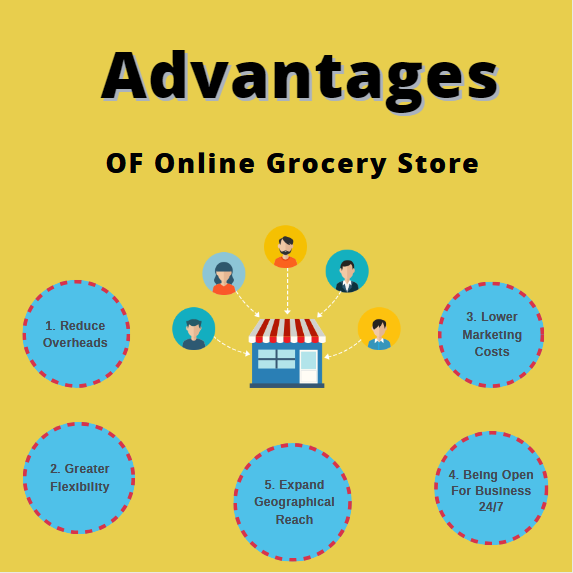Just how to Begin an Effective Ecommerce Organization from the ground up
Just how to Begin an Effective Ecommerce Organization from the ground up
Blog Article
A Comprehensive Overview to Why This Fad Is Reshaping Customer Actions and the Diverse Products That Are Changing Hands Online
In today's quickly progressing marketplace, the convergence of customization, sustainability, and technological advancement is significantly changing consumer habits. As more youthful generations increasingly prioritize honest considerations and tailor-made experiences, brand names are adapting their strategies to satisfy these assumptions. This makeover is not just a fleeting pattern but a profound change that is affecting the kinds of products exchanged in the digital world. Comprehending the hidden aspects driving this modification is important for services aiming to thrive in this new environment, motivating a closer assessment of the ramifications for both consumers and brands alike.
Key Factors Driving Adjustment
Increasingly, consumer behavior is being shaped by an assemblage of essential elements that drive substantial change in the market. One of the most essential impacts is the rapid improvement of innovation, which has actually changed just how consumers accessibility information and make acquiring choices (Ecommerce). The expansion of smartphones and social networks systems enables customers to involve in real-time communications, leading to more educated selections and heightened assumptions for customization
Furthermore, group shifts, consisting of the surge of millennials and Generation Z, are redefining market characteristics. These generations focus on experiences over product goods and seek brand names that line up with their values, such as openness and credibility. This shift forces businesses to adapt their approaches to resonate with these conscious customers.
In addition, the effect of globalization can not be overlooked. With the ability to go shopping across boundaries, consumers are revealed to a bigger range of items and brand names, fostering a competitive setting where quality and customer support end up being vital. Together, these elements produce a complicated landscape that requires services to be agile in their strategy, ensuring they fulfill the progressing demands of a varied and educated consumer base.
The Rise of Lasting Products
Exactly how can brands efficiently react to the expanding customer demand for lasting products? To navigate this change in consumer behavior, brand names need to prioritize openness and authenticity in their sustainability efforts. This involves supplying clear details about sourcing, manufacturing processes, and the general lifecycle of items. Brand names can take advantage of qualifications, such as Fair Profession or natural tags, to construct depend on and reputation with eco-conscious consumers.
In addition, innovation in product design and products is essential. Companies are significantly taking on biodegradable, recycled, or upcycled materials to minimize ecological impact. This not just attract customers' preferences yet likewise positions brands as leaders in sustainability.
Participating in community efforts and sustaining ecological reasons can better enhance brand name loyalty. Customers are a lot more inclined to sustain brand names that proactively contribute to sustainability initiatives and show social duty.

Customization in Purchasing Experiences
Customization has actually come to be a crucial component in boosting buying experiences, as customers significantly look for tailored communications that reverberate with their private choices. This shift is driven by the growing expectation for brands to understand and deal with special customer needs, which has caused cutting-edge strategies in retail.
Shopping systems currently employ innovative algorithms that assess searching background, purchase actions, and group information to curate customized product recommendations. These tailored experiences not only check this boost customer engagement but also foster brand name commitment, as clients are most likely to return to systems that supply relevant pointers.
Additionally, personalization prolongs past item referrals; it incorporates targeted marketing methods, tailored e-mail campaigns, and individualized web experiences. Brands that harness the power of data analytics can produce an extra smooth and enjoyable buying experience. Vibrant pricing versions and personalized discount rates can considerably enhance consumer fulfillment, as they show an understanding of specific getting behaviors.
Eventually, the emphasis on customization in shopping experiences stands for an essential change in consumer behavior. As brand names remain to adapt to these developing expectations, the capability to deliver customized interactions will be important for keeping competitive benefit in the retail landscape.
Impact of Social Network Trends
The rise of customization in buying experiences has actually been significantly affected by social media trends, as platforms come to be central to customer involvement and brand communication. Social network makes it possible for brands to collect considerable information about customer choices, habits, and communications, which educates individualized marketing techniques (Ecommerce). This data-driven approach allows services to tailor their offerings, improving consumer contentment and commitment

Social media site likewise promotes area among consumers, urging discussions around items and brands. This sense of belonging influences buying decisions, as customers are more probable to get items endorsed by their peers or communities. User-generated material, such as reviews and reviews shared on social systems, considerably influences brand name perception and trust fund.
The Future of Online Customer Habits
What will the future hold for online customer actions as innovation proceeds to advance? Increasingly, customers are anticipated to focus on customization and convenience in their online shopping experiences. As expert system and equipment understanding innovations our website development, stores will certainly harness data analytics to create tailored buying experiences, anticipating consumer demands and preferences a lot more properly than ever previously.
Furthermore, the rise of immersive innovations, such as enhanced reality (AR) and digital fact (VR), will certainly redefine product interaction. Consumers will certainly have the ability to visualize products in their own settings before making an acquisition, therefore lowering unpredictability and enhancing complete satisfaction.
Sustainability will additionally play an important function fit future customer actions. As recognition of environmental concerns expands, consumers are most likely to prefer brand names that show commitment to sustainable practices, influencing buying decisions and brand loyalty.
Additionally, the assimilation of voice business and smart home gadgets will certainly streamline the buying process, making deals a lot more easily accessible. In this evolving landscape, companies should adapt to these shifts, concentrating on development and customer engagement to continue to be competitive (Ecommerce). The future of on the internet customer behavior assures to be dynamic, driven by technical advancements and transforming consumer worths

Verdict
The continuous improvement in customer actions is substantially influenced by the merging of personalization, sustainability, and technical developments. As brand names adjust to meet the demands of millennials and Gen Z, the emphasis on customized experiences and honest sourcing becomes progressively obvious. The assimilation of social media better enhances these adjustments, fostering neighborhood interaction and shaping purchasing choices. The evolution of the on the internet industry continues to mirror these moving characteristics, heralding a new era for customer interactions and product offerings.
Report this page